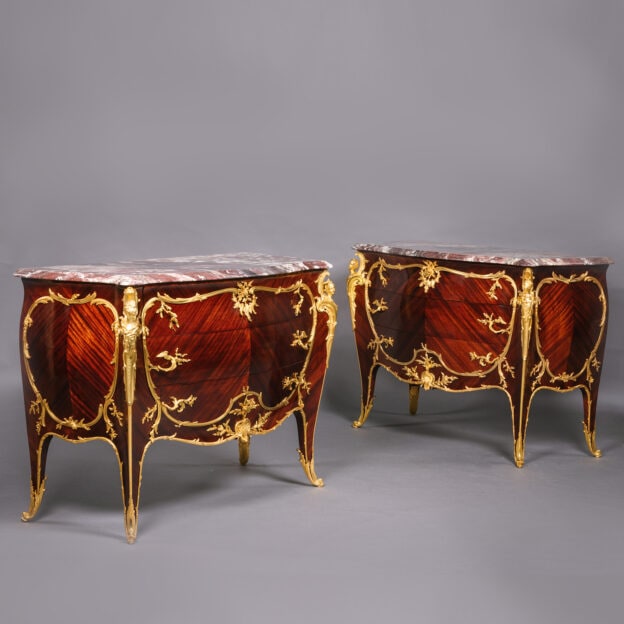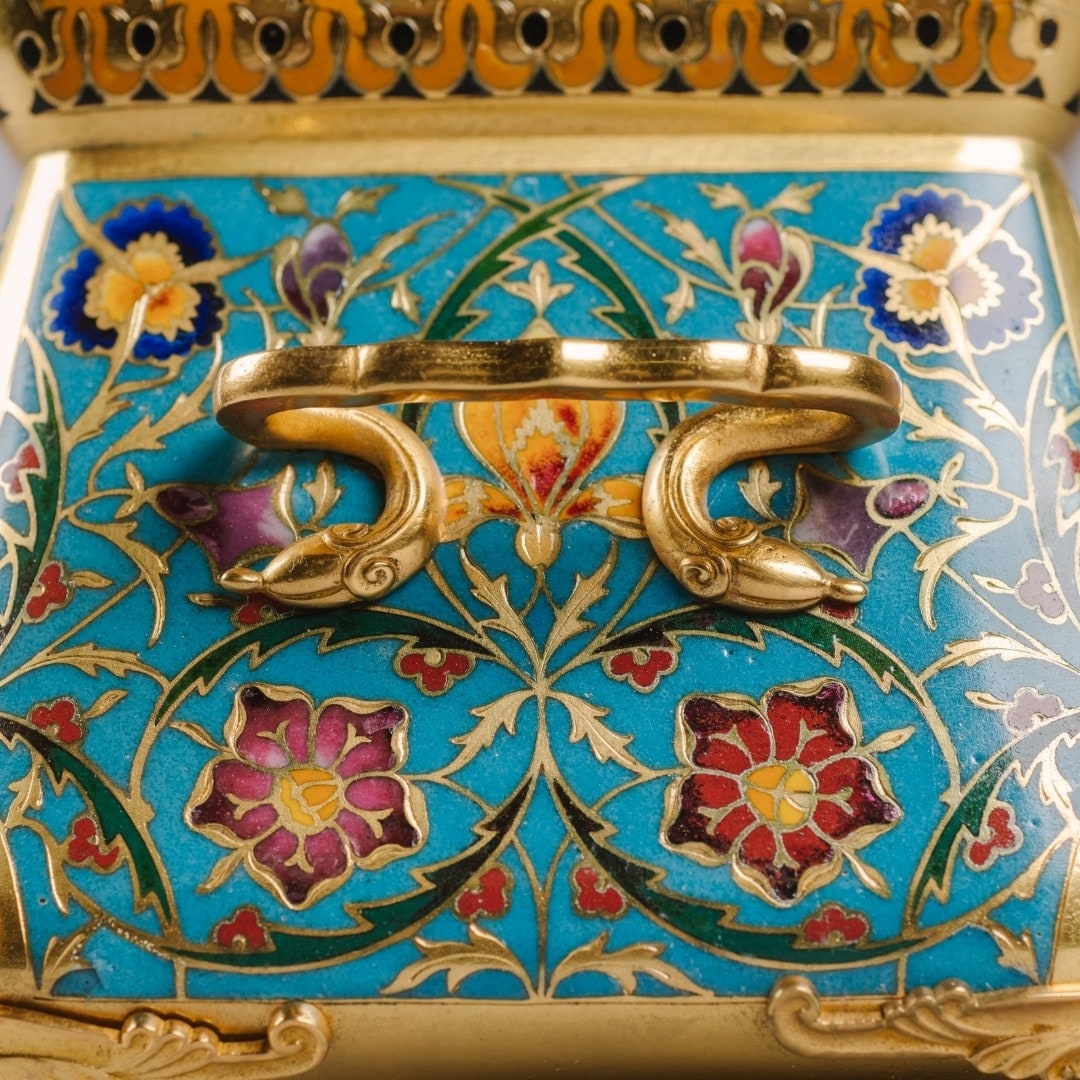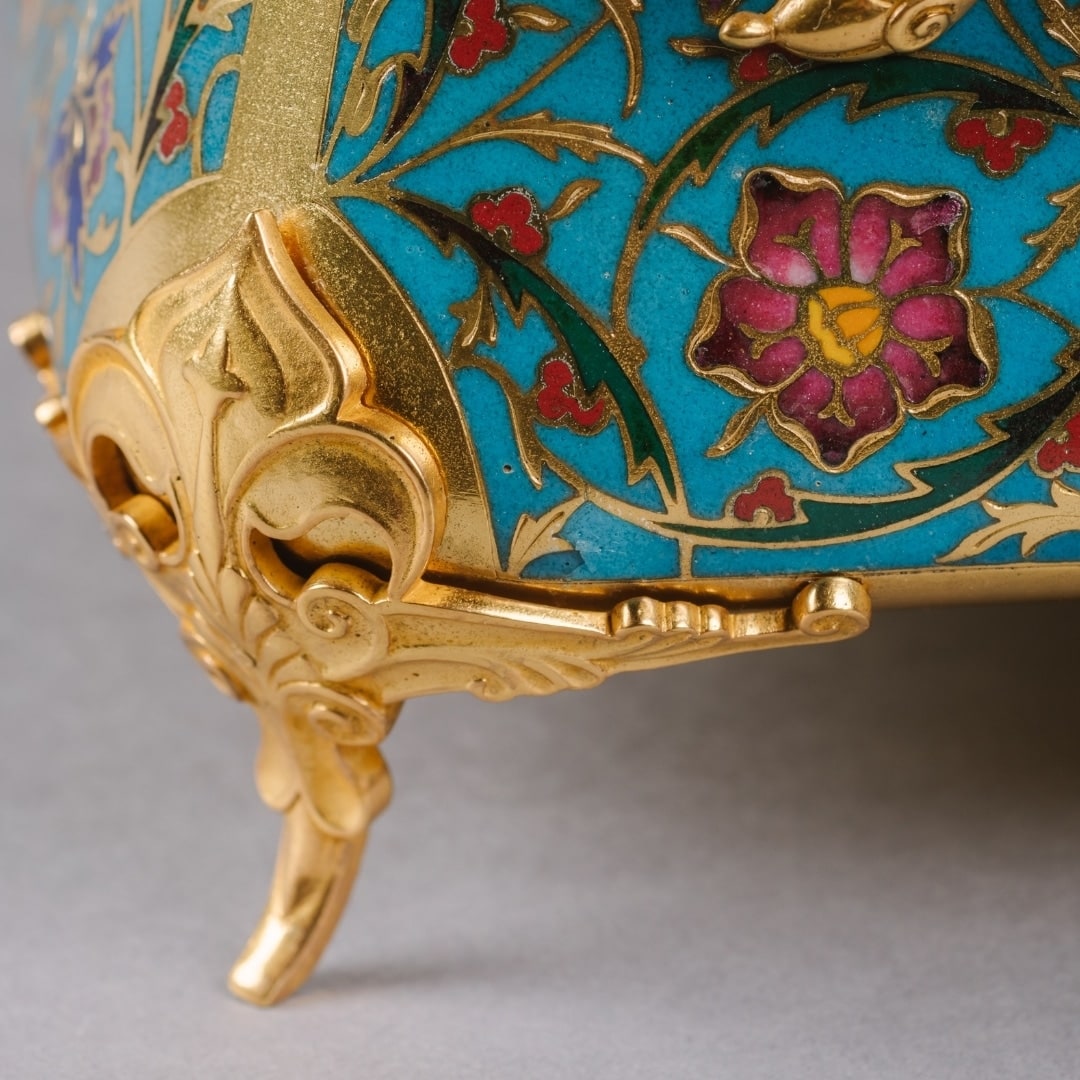Ferdinand Barbedienne
A Champlevé Enamel Jardinière
£4,500
A Champlevé Enamel and Gilt-Bronze Mounted Jardinière by Ferdinand Barbedienne, the design attributed to Louis-Constant Sévin. This fine jardinière...
Dimensions
Height: 14 cm (6 in)Width: 24 cm (10 in)
Depth: 15 cm (6 in)
Description
A Champlevé Enamel and Gilt-Bronze Mounted Jardinière by Ferdinand Barbedienne, the design attributed to Louis-Constant Sévin. This fine jardinière is decorated all over with foliate scrolls and polychrome enamel flowers on a turquoise background. The jardinière retains its original metal liner.
Champlevé enamelling is similar to cloisonné in that the enamel is applied to discrete cells separated by metal. However, in champlevé, cells or troughs are cast into or cut away from the metal base, leaving a raised metal line between the cells which forms the outline of a design. The cells are then filled with molten or powdered glass and fired.
The design for the jardinière with its distinctive néo-Byzantine enamel work is attributed to the sculptor and designer Louis-Constant Sévin (1821-1888), who created many of Barbedienne’s most important pieces from 1855 until 1888.
At the age of thirteen the gifted Sévin entered an apprenticeship with the sculptor Marneuf and by 1839 was an accomplished sculptor and designer of jewellery. During the Revolution of 1848 he moved to London taking up the position of foreman for the goldsmith’s firm of Jean-Valentin Morel in London. Many of the items he designed for Morel where presented at the Great Exhibition of 1851 in London.
Returning to France in 1851 he moved to Limoges to design porcelain for the factory of Jouhanneaud & Dubois, before finally taking up the position of sculptor – decorator with Barbedienne in Paris in 1855, a position he was to hold until the end of his life in 1888. He was to achieve great recognition for his work throughout his long career, including a medal for excellence at the London Exhibition of 1862 and a Gold medal at the Exposition Universelle in Paris in 1878.
An identical jardiniere with a cream rather than a turquoise field, signed ‘Ferdinand Barbedienne’ to the gilt bronze base, was previously in our collection Ref: B69110.
French, Circa 1870.
Date
Circa 1870
Origin
France
Medium
Bronze

Ferdinand Barbedienne (6 August 1810 – 21 March 1892) was a French metalworker and manufacturer, who was well known as a bronze founder.
The son of a small farmer from Calvados, he started his career as a dealer in wallpaper in Paris. In 1838 he went into partnership with Achille Collas (1795-1859), who had just invented a machine to create miniature bronze replicas of statues. Together they started a business selling miniatures of antique statues from museums all over Europe, thus democratising art and making it more accessible to households. From 1843 they extended their scope by reproducing the work of living artists and also diversified by making enamelled household objects. With the outbreak of the Franco-Prussian war in 1870 the firm briefly had to switch to cannon founding owing to the shortage of metals but resumed business afterwards. Following Barbedienne’s death in 1892, he was buried in the Père-Lachaise cemetery and the firm was carried on by his nephew Gustave Leblanc until 1952.
Among the principal artists reproduced by the firm were Antoine Louis Barye and Auguste Rodin.











 Print
Print


